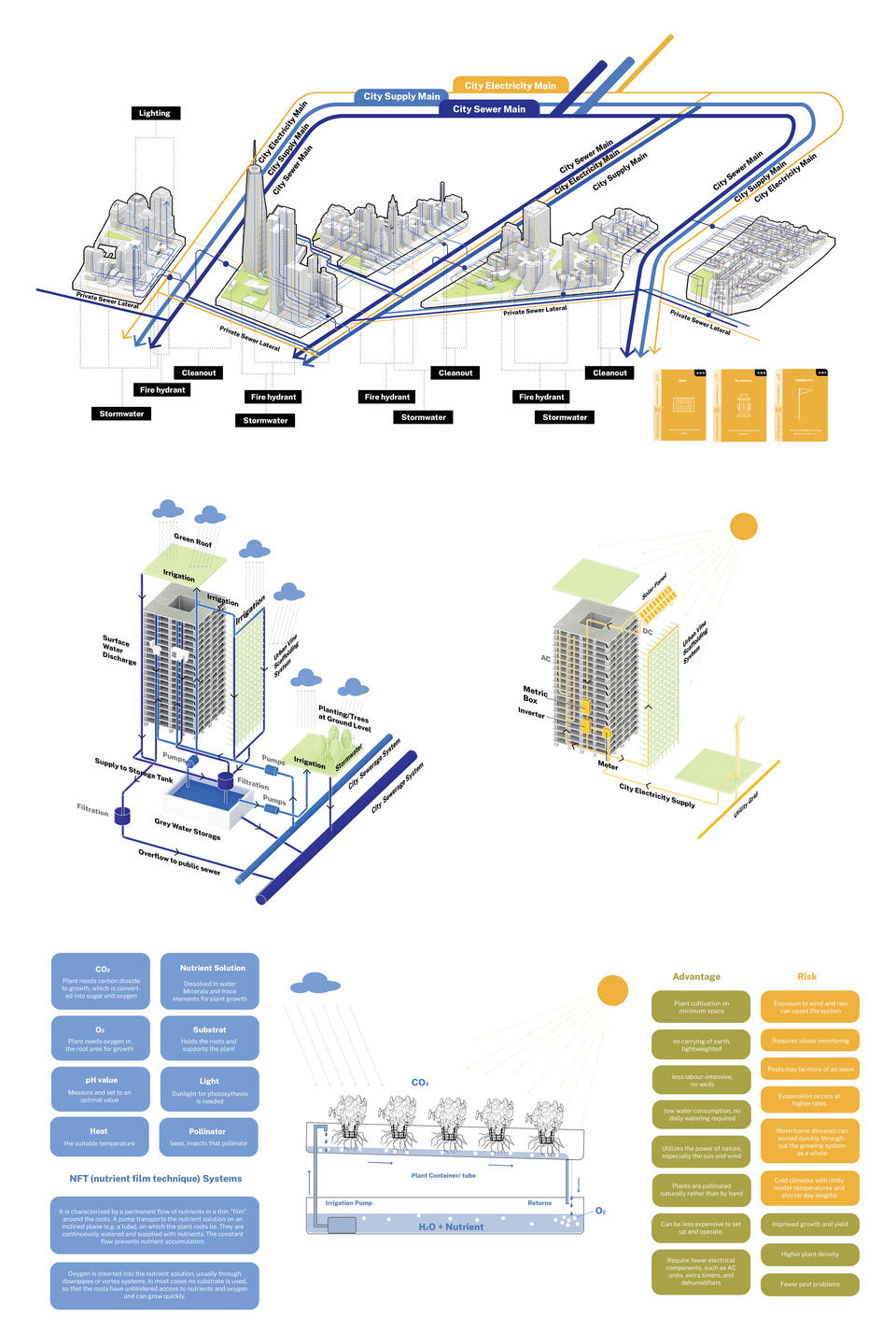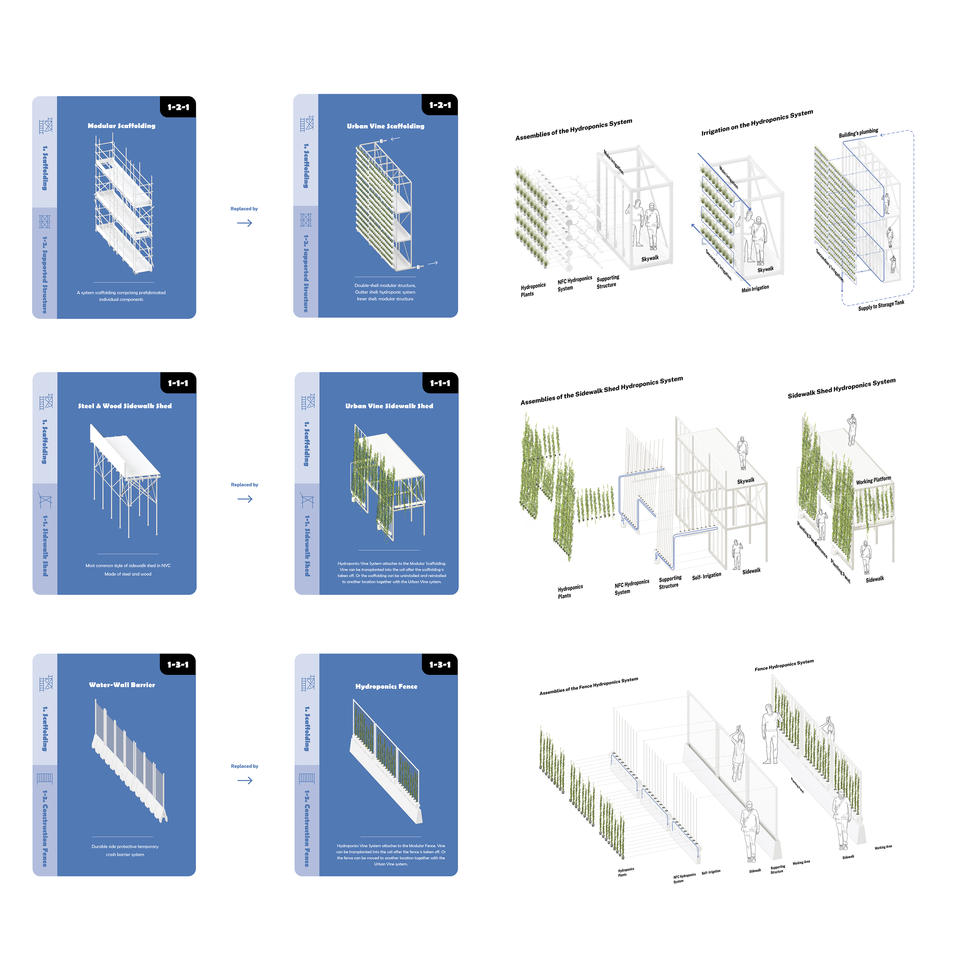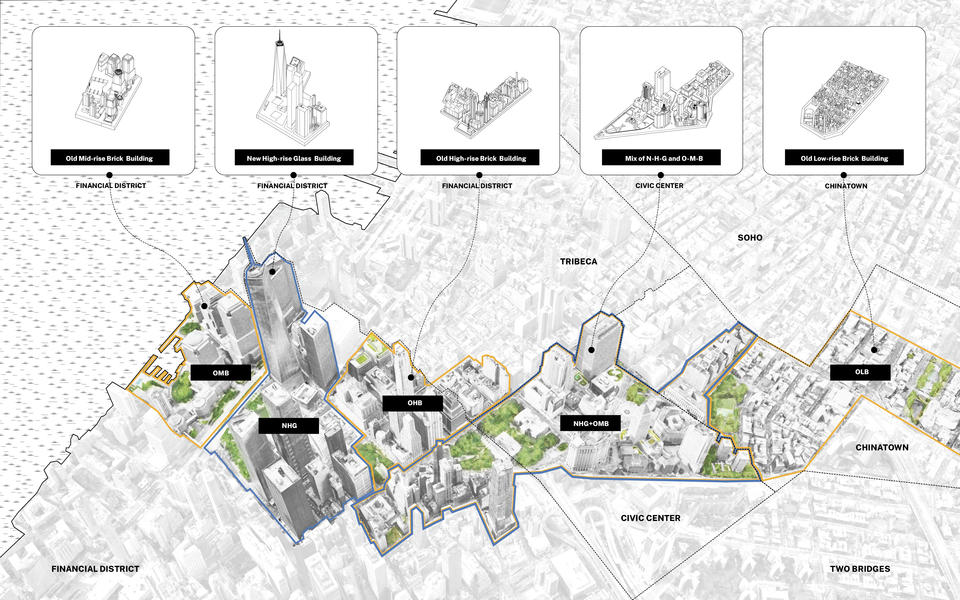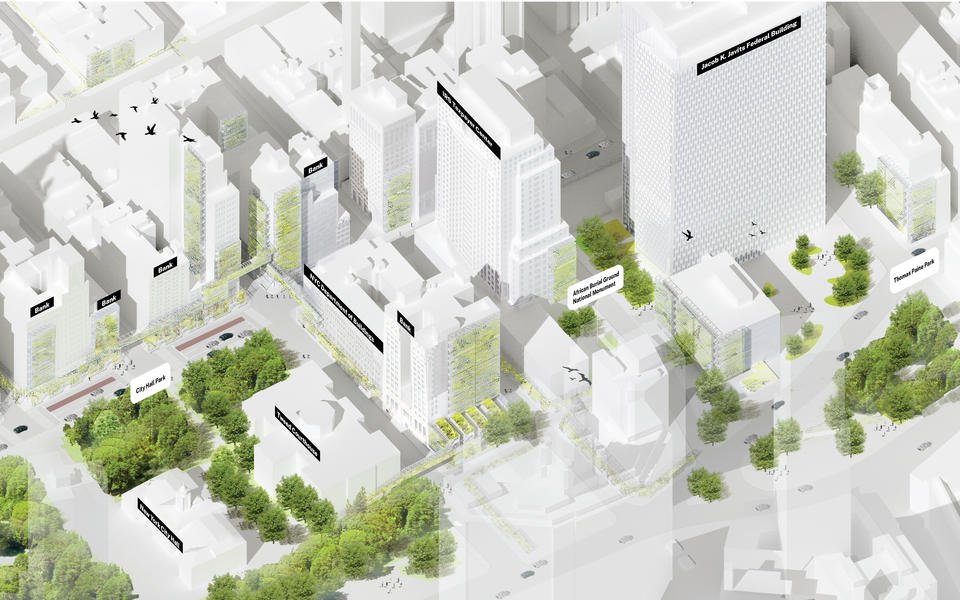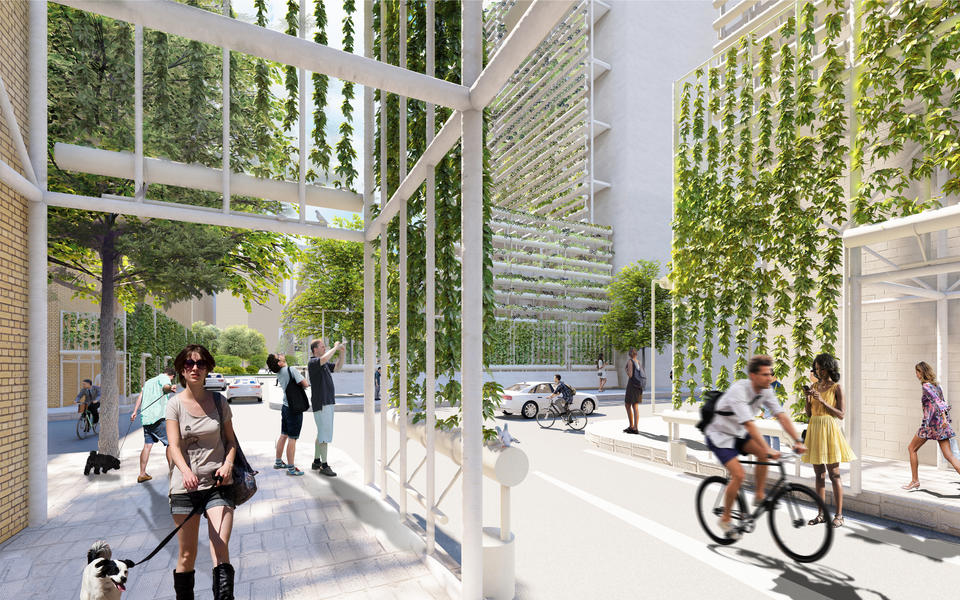Shuyi Guan
Urban Vine: Reimagine the Scaffolding as a Repair Opportunity to Transform the Ecosystem
Scaffolding has been used as a tool to remove, construct, or repair city infrastructure. It can also be conceived as a metaphor for city development and its continuing renovation. Scaffolding in New York City has become an urban problem because it is structurally unsafe, and the darkness it brings to the street is a perceived threat to the sidewalk commons. It makes the sidewalk become a negative space in between the building and the street and the street edge is less identifiable. These negative experiences cause walking on the street to be less comfortable.
Cities are in continuous transformation, both in terms of their infrastructure and their urban ecosystems. This thesis regards scaffolding as a tool for repairing the ecosystem in the city and providing an opportunity for plant succession in highly congested urban environments. In the larger urban system, the proposed scaffolding is defined as an “Urban Vine”: a part of the streetscape moving across neighborhoods throughout Manhattan; a megastructure utilizing dynamic modules to create an adaptive system that supports the succession of the ecosystem in the city, free to move and grow across different locations. The “Urban Vine” aims to increase the percentage of sustainable green surfaces while working as a living organism in the city’s fabric.
This thesis discusses the scaffolding’s ephemeral existence at the individual scale and its more permanent character as a system at the urban scale. The study investigates how the Urban Vine utilizes the city’s infrastructure as a parasitic structure that, at the same time, is also symbiotic with the city. How can it allow a creative opportunity for citizens to move through the city and finally lead to meaningful social, cultural, and ecological outcomes?
Image
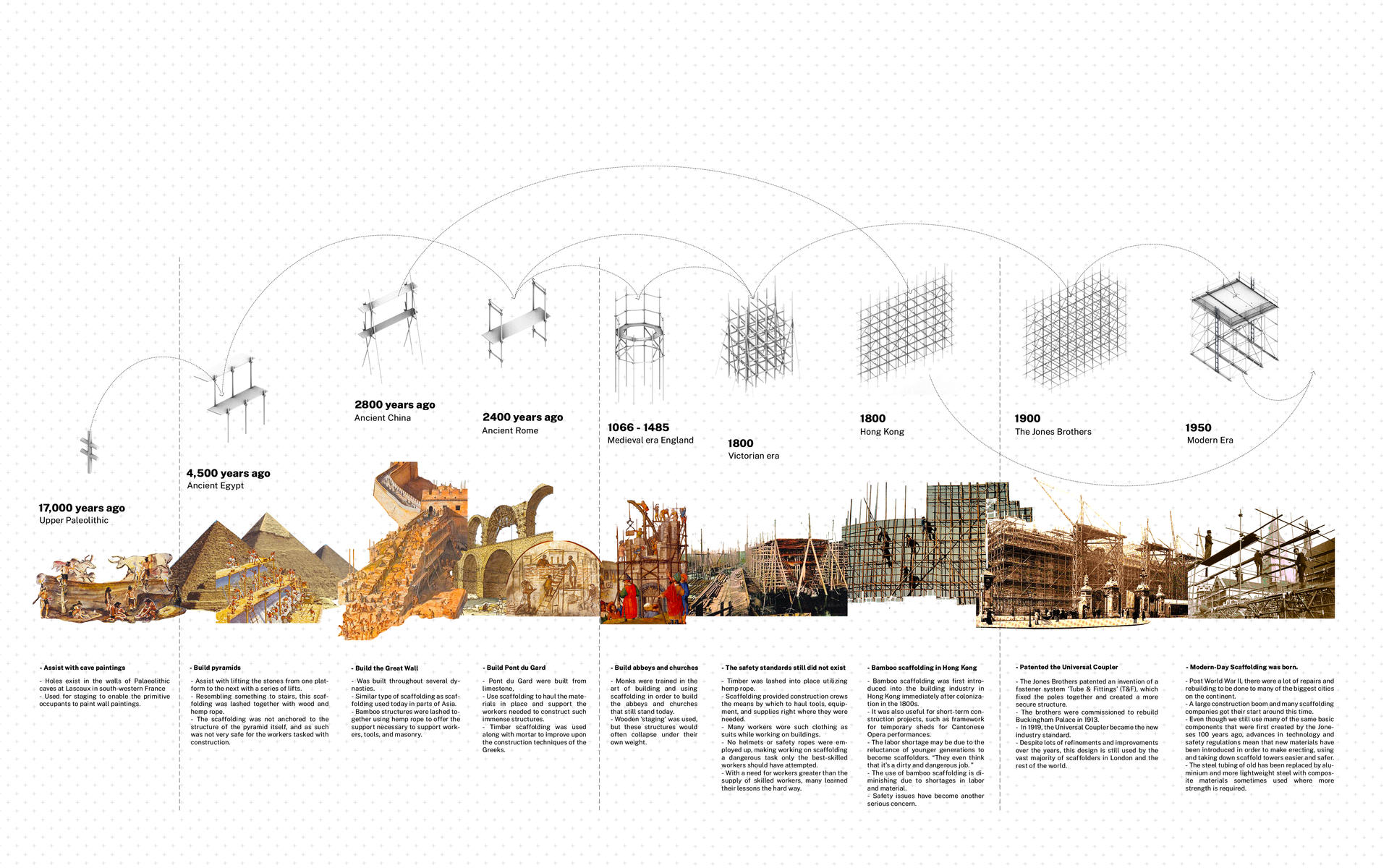
Scaffolding Techniques Development
Digital Drawing
16" x 10"
2022
Buildings throughout the world have been constructed using scaffolding. These same structures are used in maintenance, repair, and make improvements in addition to construction. Seeing the steel and wood plank structures we know today, it is hard to think about it being used throughout history.
Image

Scaffolding Condition Mapping
Digital Drawing
16" x 10"
2022
Currently, there are about 9,000 active sidewalk sheds in New York City, each with an average life span of about 300 days. In total, the sheds take up over 1,000,000 linear feet of space. The density of scaffolding is so high that if we count the area of all the scaffolding surfaces, it is almost equal to the area of double Central Parks.
Image
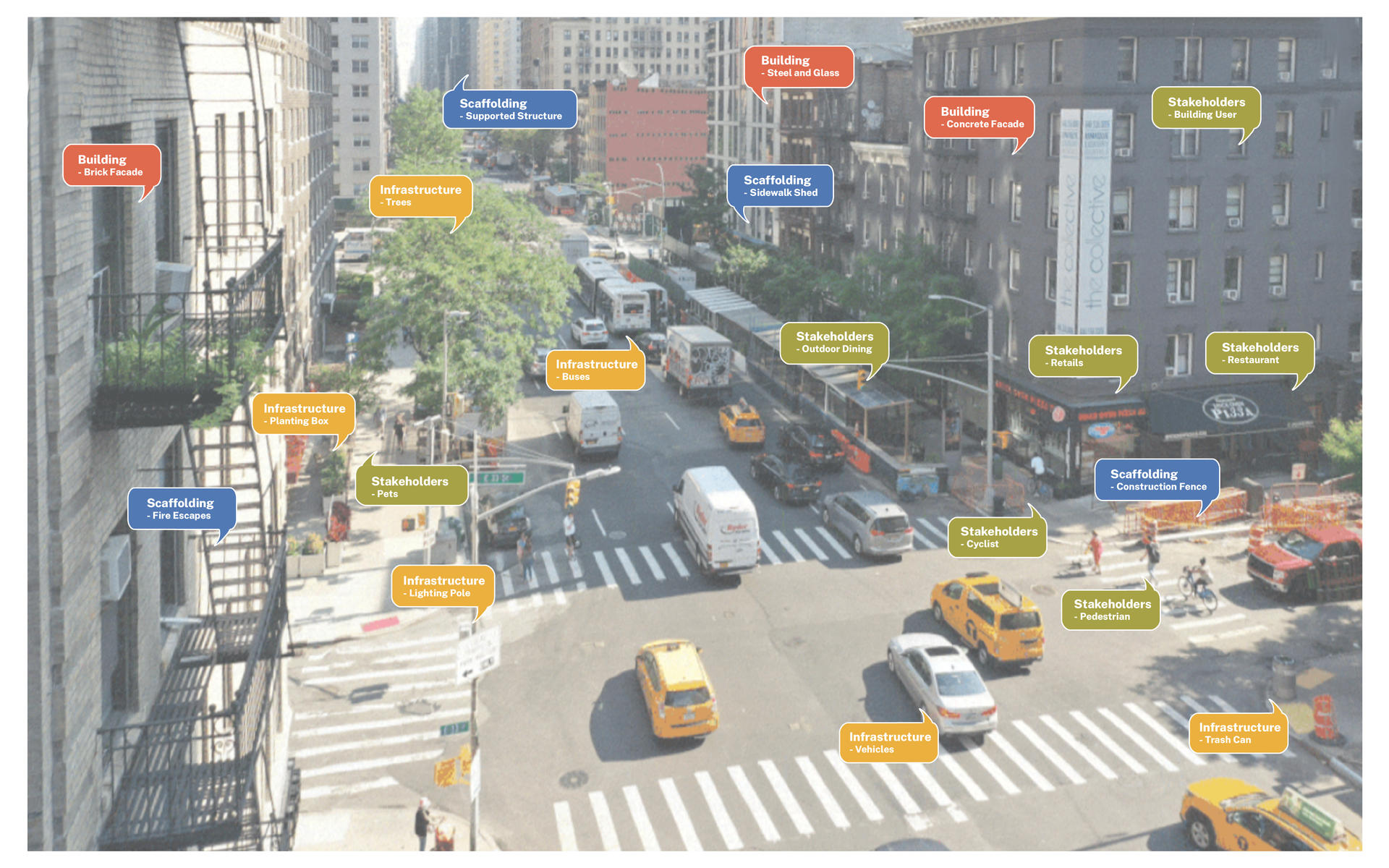
New York City Problem Mapping
Digital Drawing
16" x 10"
2022
Scaffolding is part of the NYC streetscape, and lasted for a long time. The scaffolding could be perceived as “negative spaces,” uncomfortable corners, unwanted areas under heavy traffic intersections. The unsightly structures have become an unwelcome part of the city landscape, with critics complaining they have evolved into dark, trash-strewn havens for vagrants and criminals and hurt local businesses who struggle to draw new patrons with their facades concealed by wood and metal. In most cases, they are abandoned and maintenance-free. These residual spaces seem to be a burden on city planning as they turn into abandoned or informal activities.
Image

Street Under Construction
Digital Drawing
48" x 10"
2022
During my field trip to New York City to observe the scaffolding, I found that the scaffolding is usually set up to help new constructions and also maintain the old buildings. They are very different from each other when they are in a newly developing district and old district, attaching to private buildings or public buildings. I documented three conditions in Financial District, City Hall District, and Chinatown in Manhattan to better understand the street and scaffolding conditions there.
Image
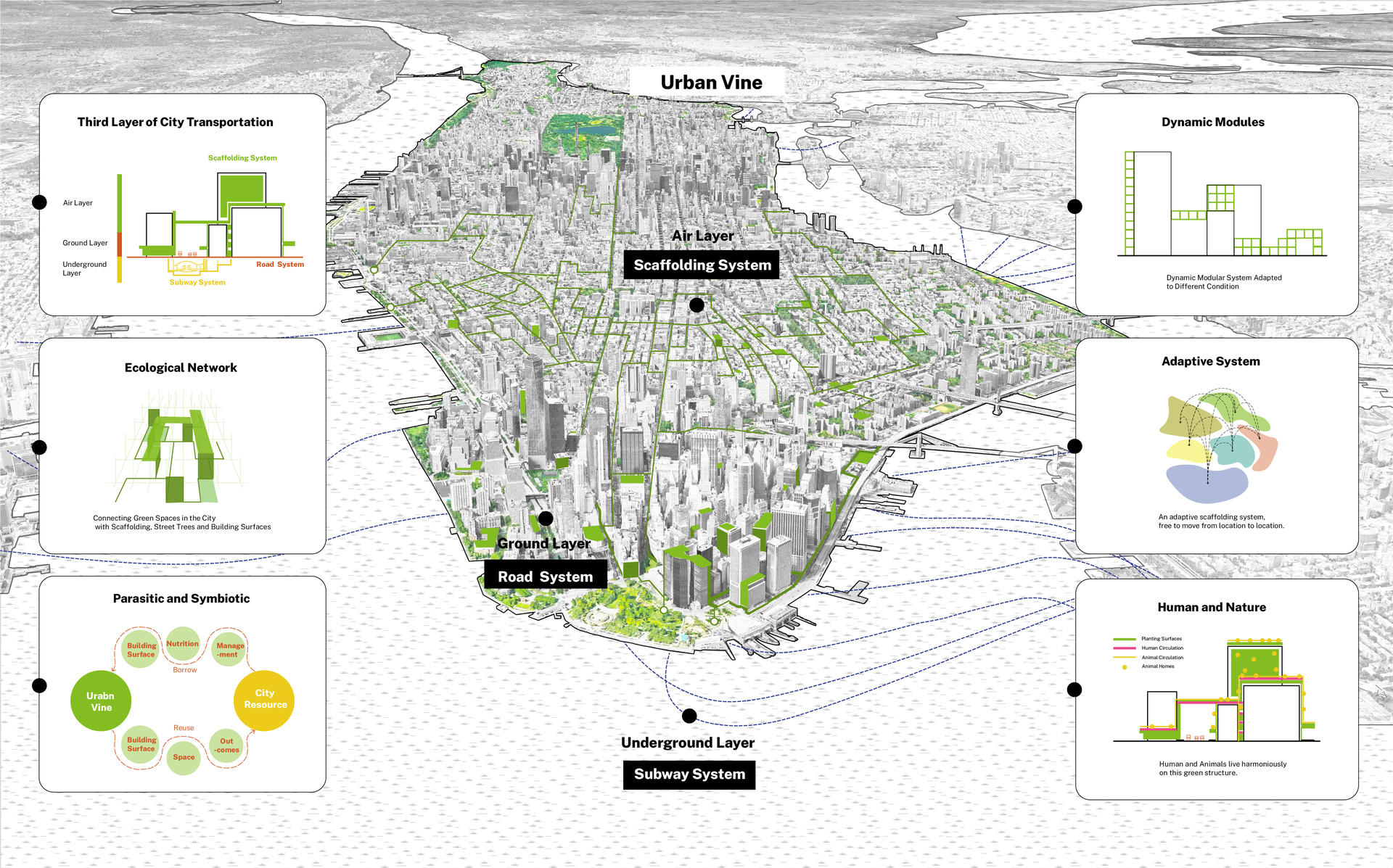
Urban Vine
Digital Drawing
16" x 10"
2022
The city consists of infrastructure and an ecosystem. We continuously change, transform, and repair the infrastructure in the city to something different. This thesis will also see scaffolding as a tool for repairing the ecosystem in the city which will provide an opportunity for the succession of plants through generation to happen in the highly developed city. In the larger urban system, this scaffolding would be understood as an “Urban Vine”, a part of the streetscape moving across neighborhoods throughout Manhattan; a megastructure utilizing dynamic modules which create an adaptive system that support the succession of the ecosystem in the city, free to move and grow from location to location. The “Urban Vine” will work as a living organism in the city's fabric while sustainably increasing green space.
- Architecture
- Ceramics
- Design Engineering
- Digital + Media
- Furniture Design
- Global Arts and Cultures
- Glass
- Graphic Design
- Industrial Design
- Interior Architecture
- Jewelry + Metalsmithing
- Landscape Architecture
- Nature-Culture-Sustainability Studies
- Painting
- Photography
- Printmaking
- Sculpture
- TLAD
- Textiles
